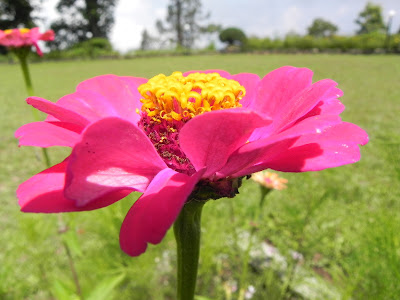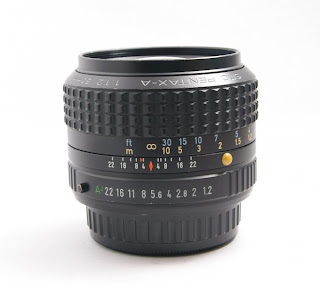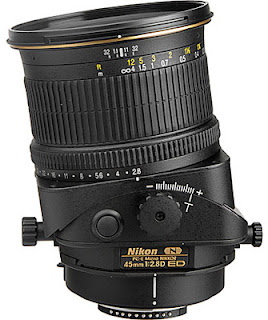Thursday, 31 May 2012
Saturday, 26 May 2012
Tuesday, 22 May 2012
Sunday, 20 May 2012
Basics of Camera-Part 3
Hey. So we covered lenses last time. Hope it was helpful.
Today we are going to have a look at few other important parts of the camera.
Perfect pictures require the perfect lighting. After all an
image is nothing but light rays bouncing of an object. But what if there are not enough light rays,
meaning what if there is not enough light. In such cases the light rays have to
be generated so as to get the picture. This has to be done very carefully,
accurately and quickly. Enter camera flash.The basic idea of a camera flash is simply converting the
electrical energy of an electron to the light energy of a photon. By the way,
an electron is simply something responsible for the flow of current. And you
can consider a photon as a part of light responsible for propagation of
light.
 |
| A discharge tube filled with xenon gas emitting light |
The basic assembly of a camera
flash is a discharge tube filled with xenon gas, metal trigger plate and a
circuitry. The battery powers the
circuitry which in turn is responsible for
charging the metal plate. As electrical current moves through the metal
plate electrons in the tube get attracted to the plate and move towards it. As
they move towards the plate they collide with the xenon atoms in the tube and
release light. This light is then directed using a mirror. Well there you have,
that’s basically how a flash works, although there is a lot more to it. To
actually power a flash a very high voltage is required. A regular pencil cell
or even those lithium ion batteries are simply not enough. Hence an electrical
device called a transformer and a capacitor is used. Also a really neat device called an
oscillator is used for creating the short burst of light. Let’s not go into the
technicalities though shall we. No one is really going to ask you about it. The
basics will be more than enough.
So that was all about the camera flash. Now let us move onto
another a really cool feature found on most DSLR cameras but nowadays sported
by even some of those point and shoots. It is called the diopter adjustment
knob. It’s a very small knob usually beside the viewfinder. So how is a small knob like that going to be
useful? Well if you have ever had a situation where the image appears all
blurred from the viewfinder but the camera produces great results then this the
little knob is what comes in handy. It is important to note that it does not
affect the focus of the image but only the way the eye processes the image. It
is basically very handy if you are wearing glasses.
 |
| Diopter knob highlighted in red circle |
Well we have almost come to the end of this article. Hope
you are not getting bored. Just have one more thing to look at and that is the ‘mode
dial’.
MODE DIAL: Well the mode dial is present mostly on all
cameras today. However, the functionality offered by them may vary. Point and
shoot cameras will offer relatively less functionality. The common modes are
1)
Auto: The camera automatically handles the
settings, basically that of flash and exposure.
Usually indicated by the word ‘Auto’.
2)
Program: Same as Auto except that a few settings
like the flash can be controlled
Few others are portrait, landscape, sports, night etc.
 |
| A typical mode dial found a DSLR camera |
DSLRs and Bridge
cameras give you the option to control aperture and shutter speeds in order to
give you more control over the ‘exposure’. This is another topic in itself and
deserves a complete article. In fact, books have actually been written about ‘exposure
‘ and the factors which influence it.
So anyways, if you really want to know what your camera has
to offer it would be better to try it out. You could even read your camera
manual. What??? No I am not joking. I am serious. Have a go at the
manual. You never know there just might be something that you did not know
about.
Well that is it for now. So I hope the article was useful. Feel free to give me your
feedback. I know a lot of people do not really want to know how a camera works
but hey a little knowledge hurts no one.....right ?????I Hope.
Thanks for your patience.
Happy clicking.
Saturday, 12 May 2012
Basics of Camera-Part2 Lenses
The lens is effectively the single most important component of the camera. Without the lens there simply would be no camera. A camera lens is actually an assembly of lenses. The lenses job is to focus light on the film or the chip. Designing a lens is a daunting task. Lens designers have to overcome a number of challenges called aberration. We will have a complete article on aberrations in the future.
For now we will just concentrate on lenses.
INSIDE OF A CAMERA LENS:
This is a very basic layout of a camera lens. Depending upon the lens there could be a lot more of those lens groups in the assembly.
FOCAL LENGTH:
The basic operation of lens is something we all learned or at least some of us learned in school. Light rays coming from an object pass through the lens and congregate on a point. The point where they meet is called the focus. The distance of this point from the optical center of the lens is called the focal length of the lens. The photographic film or the sensor is placed at the focus
Have you ever shot an entire city from the top of a fort or may be the top of a tower or from any other structure. Mostly likely you will only be able to capture a part of the city unless you use some kind of a panoramic view software. So even though you can see a lot more than what your photograph captured you will still see just a part of it in the photograph. This is because the lens has only that much angle of view. The angle of view is the angular extent to which a scene is captured by a camera. Say may be you manage to locate your house from up there, although that has got to be one big house, and you zoom in on it you will see more of your house and less of everything else thus reducing the angle of view even further.
The angle of view of a lens is determined by its focal length.
The angle of view of a lens is determined by its focal length.
Depending on the focal length the lenses are classified as
1) Normal lenses
2) Wide Angle lenses: Which smaller focal length and have a wide angle of view
3) Telephoto lenses: Which have a greater focal length and a narrow angle of view
Always remember:
When the focal length is very large then the lens is a telephoto lens and gives a narrow angle of view. When the focal length is small then the lens is a wide angle lens and gives a wide angle of view.
FOCAL LENGTH AND MAGNIFICATION
Now magnification is simply getting an enlarged image of something. A lot of times we want to shoot something that is really far away. To get a good shot of it you can either go towards it or bring it to you.
Many a times going near the subject would be impossible. If you enjoy wildlife photography and want to shoot a rhino......well you get the point. In such cases if the focal length is large then the image is magnified.
Focal length and magnification are also related to each other.
The greater the focal length the more the magnification.
Smaller the focal length less the magnification.
Surely, most of you will have concluded one thing from this:
The grater the magnification smaller is the angle of view which means at higher magnification you will see less of your subject.
The smaller the magnification the greater is the angle of view.
You can see here that as we focus more at center of the giant wheel we see less of the giant wheel.
You can see here that as we focus more at center of the giant wheel we see less of the giant wheel.
So by changing the focal length of the lens you can get a wide angle view of something or a telephoto view.
WAIT A MINUTE…CHANGING FOCAL LENGTHS?
Yes.You heard it right.What's that? How can a focal length of a lens change you ask? Isn’t it supposed to stay the same? Yes and no. The focal length of any lens doesn’t change but do you remember me telling you that a camera lens is actually an assembly of lenses. The focal length can be effectively varied by varying the positions of the lenses in the lens assembly. Will not go into the details of this right now. But will definitely cover it in an upcoming tutorial for those interested.
TYPES OF LENSES
Most lenses today can be classified as
Zoom lenses
Macro lenses
Telephoto lenses
Prime lens
Zoom lenses are the ones which can vary their focal lengths.
Macro lenses are meant to focus on a relatively small area, used for close-ups . Example a flower or an insect
Telephoto lenses are those in which the length of the lens is smaller than the focal length.
Prime lenses are the ones with a single focal length.
Few other lenses are fish-eye lens and the tilt shift lens
A fish eye lens is ultra wide angle lens to capture a very wide image which is highly distorted.
Tilt shift lenses as the name suggest tilt and shift the lens relative to the image plane. The image plane is the film or the chip where the image is formed. The lens is shifted so that
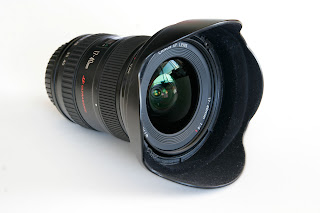 |
| Canon 17-40mm Wide angle lens |
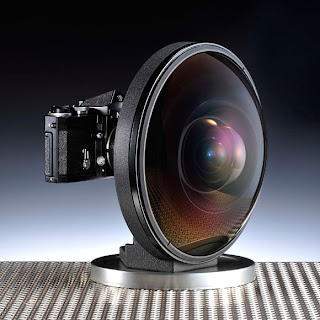 |
| A NIKKOR fish eye lens |
Sunday, 6 May 2012
Basics of a camera-Part1
 | |
| Nikon D7000 SLR camera |
 |
| A nikon coolpix point and shoot camera |
Obviously the most important thing to learn photography is a camera. Camera come in all shapes and sizes today and everyone will most likely have a camera on him or her,may it be a full fledged SLR, a dedicated point and shoot or the one that tags along with your phone.
I am not going on into the difference between SLR and point and shoot cameras , that deserves another article. The only important thing to remember is that if you really want to get into photography, even as a passion rather than a profession then you really need to get your hands on Digital SLR or DSLR.
So now let us get to what we started here. Nowadays we here a lot about digital cameras,but the camera is still and will always be an optical instrument. Basics physics of optics is what makes every camera tick or rather click.
Any camera will have the following
1)Body: The protective outer casing, generally made of plastic or metal holds the different parts of the camera together and also provides protection to the delicate components inside.
2)Lens: A camera lens is actually an assortment of lenses all working together to provide the perfect picture.
3)Viewfinder: The small window through which you frame your picture.
4)Shutter release button: The small button on top which technically leads to all the amazing photographs. A half press activates and locks the auto focus while pressing the button all the way captures the photograph.
5) Flash: Built-in on the body of most compact and some DSLR cameras. Can be either fixed or flip-type. Illuminates a poorly lit scene by shooting a burst of bright light.
6) Mode Dial: The dial allows you to select a shooting mode, automatic or manual or a choice between one of the pre-defined settings. Some of the other modes may be shutter priority and aperture priority.
7)Focusing Ring: It is a ring on the lens body which moves the lens assembly so as to get a clear picture. Although all modern cameras today have auto focus feature,they will still allow manual focus to achieve just the right amount of focus to get that perfect picture. A switch is toggled to switch from Auto focus(AF)to Manual(M). Available only on DSLRs.
8) Diopter Adjuster - Usually available in mid to high end sub-compact cameras and DSLRs .You will find it besides the viewfinder. This varies the focal length of the lens in the viewfinder such people wearing eyeglasses to see clearly through it even without the eyeglasses.
9)Aperture: The aperture is simply a lens opening which regulates the amount of light passing to photographic film or in case of digital cameras image sensor.
Right so these are the basics parts of any camera.
In the coming tutorials we will see all these components in more detail.
Thanks for your patience.
Subscribe to:
Comments (Atom)
